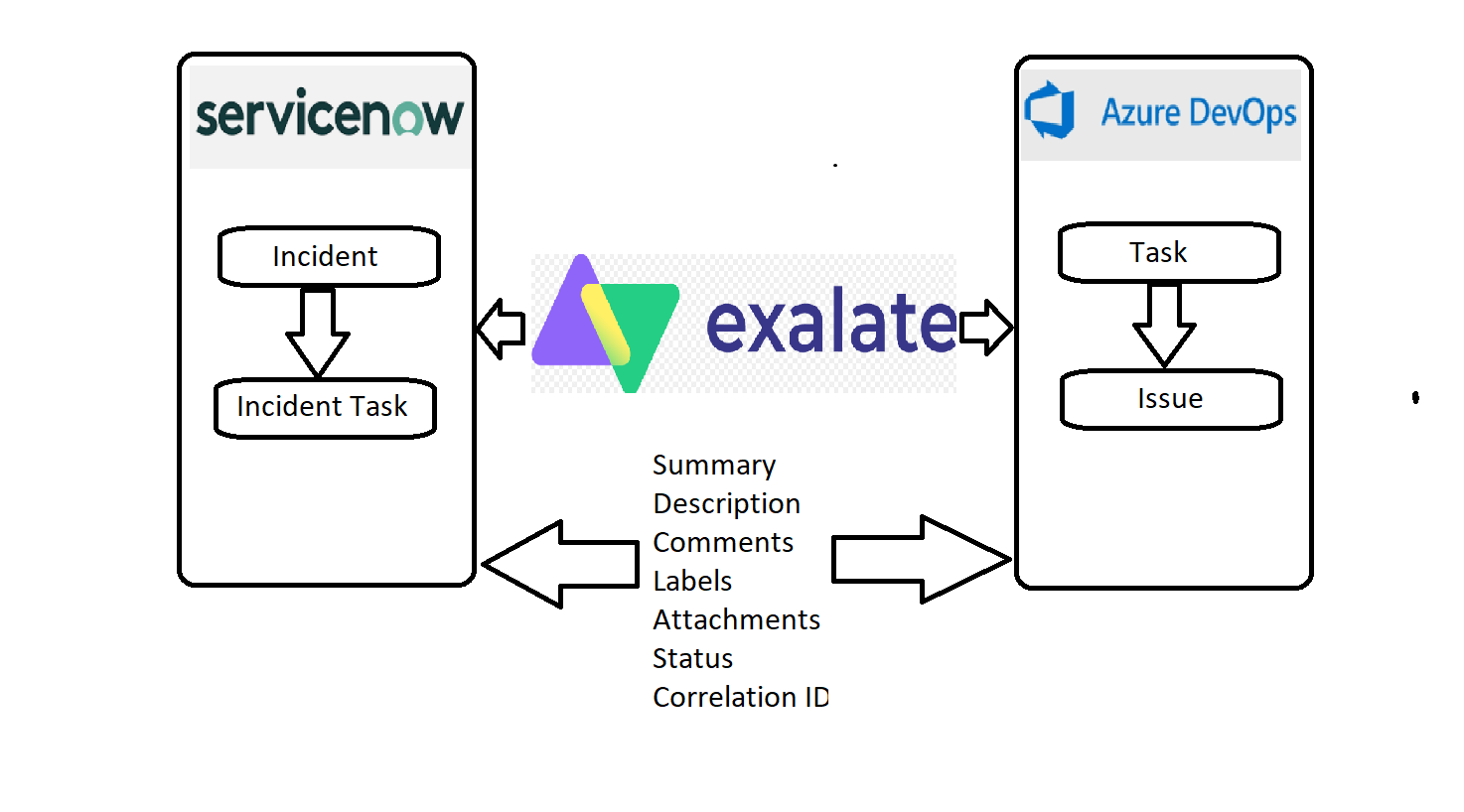The main requirement for this use case is to maintain the issue hierarchy while Exalating issues between ServiceNow and Azure DevOps (bi-directionally).
The Incident → Incident Task relationship in ServiceNow must be reflected as Task → Issue relationship on Azure DevOps, and vice versa. The following depicts what we are trying to achieve here:
Let us first consider the ServiceNow to Azure DevOps side:
ServiceNow outgoing scripts need to ensure that the both the Incident and Incident_task tables are catered for:
On the Azure DevOps side, we need to firstly map the issue types. This can be easily done using the following code segment on the Incoming Script on the Azure DevOps side:
The next step on the Azure DevOps side would be populate the parent link in order to ensure that the hierarchy is maintained. This can be done via the following code snippet, that uses the getLocalIssueKeyFromRemoteId method, added in the Azure DevOps incoming scripts:
Let us now consider the Azure DevOps to ServiceNow direction:
The key to maintaining the hierarchy here is passing the parentid field in the outgoing script on the Azure DevOps side:
replica.parentId = workItem.parentId
Next we need to ensure that the correct mappings are present on the ServiceNow Incoming scripts:
And to close this off, we will employ getLocalIssueKeyFromRemoteId to fetch the local parent and maintain the hierarchy:
entity.incident = syncHelper.getLocalIssueKeyFromRemoteId(replica.parentId)?.idStr
The entire code from the ServiceNow side is here, and for Azure DevOps is here.
Please review the following video to see the use case in action:
Questions
Recent Questions
- 0votes
- 0votes
- 0votes
- 0votes
- 0votes
- 0votes
- 0votes
- 0votes
- 0votes
- 1vote

